Modulation is a process used for transmitting a signal over a long distance, without any external interfaces or noise. The modulation of the signal produces an original signal without adulteration in the original signal at the receiving end.
If you have ever used a radio, you must be aware of the FM and AM. We need to set the AM or FM radio band for listening to the audio. Each radio station has its unique tuning frequency on the FM and AM scale. At the transmitting end, the modulation process is done to carry the modulated wave up to a certain distance where the audio signal is recovered at the radio receiver. Thus, the modulation is significantly important for carrying the audio signal at a long distance, without much attenuation and distortion.
What is Modulation?
Modulation is the process of conversion of data into modulated waves by adding information to the carrier signal. The carrier signal, as its name suggests, is a high-frequency signal that modulates the audio signal. The high-frequency signal can travel a long distance without disturbing the original signal.
Moreover, there is less possibility of signal attenuation and distortion. A signal with a steady waveform indicates that it has a constant amplitude and frequency. In addition to this, it is possible to add information on such a carrier frequency through modulation by altering its frequency and phase, amplitude.
Thus, we can define modulation as the process of changing the amplitude, frequency, and phase angle of the carrier signal according to the instantaneous values of the modulating signal.
Why Modulation is Necessary for Communication?
We can transmit a baseband signal over a pair of wires (like in a telephone), coaxial cables, or optical fibers. However, it is not possible to transmit a baseband signal over a long distance over a radio link or a satellite. For long transmission of the baseband signal, a large antenna to radiate a low-frequency spectrum is a must. However, it is not pragmatic to install a large-sized antenna. The solution to this problem is the use of modulation. In the modulation process, the baseband signal modulates by a high-frequency carrier signal. This can be done by amplitude and by angle modulation (frequency and phase).
Signals in the Modulation Process
Modulating Signal or Message
The signal that contains a message is called a message signal or baseband signal.
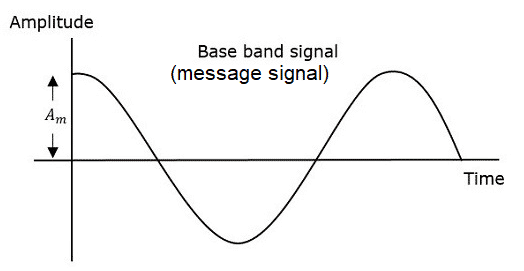
The message signal undergoes the process of modulation for long-distance transmission. Therefore, it is also called the modulating signal.
Carrier Signal
The carrier signal is a high-frequency signal. It has a certain amplitude, frequency, and phase and contains no information or message signal.
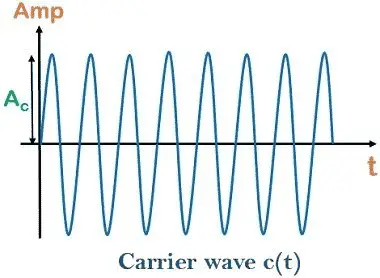
The carrier signal’s sole function is to carry the signal to the receiver after modulation.
Modulated Signal
The output signal of the modulation process is the modulated signal. Thus, this signal contains the modulating signal and carrier signal.

Types of Modulation
The followings are the major categories of the modulation.
- Continuous-wave Modulation
- Pulse Modulation
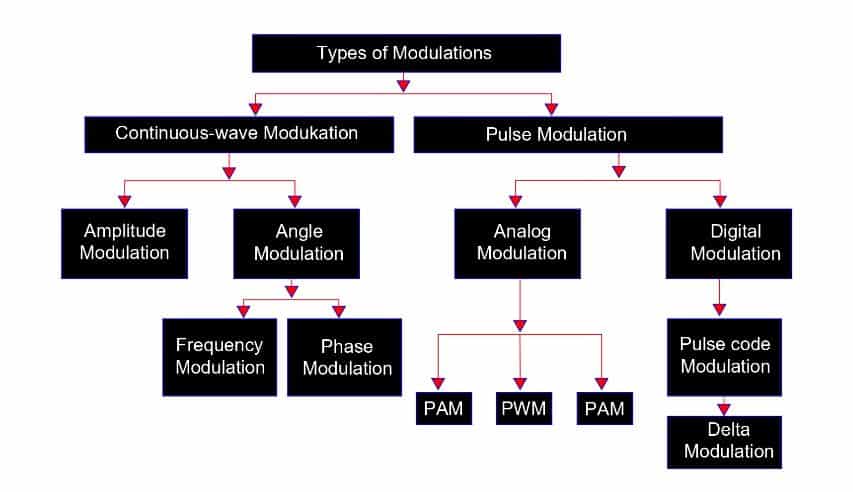
Further, both categories of modulation have sub-categories. We will now discuss the types of modulation.
Continuous-wave Modulation
A high-frequency sine wave is used as a carrier frequency in continuous-wave modulation. The subcategories of the continuous -wave modulation are;
- Amplitude Modulation
- Angle Modulation
- Frequency Modulation
- Angle Modulation
The procedure of amplitude and angle modulation is as follows.
- In amplitude modulation, the amplitude of the high-frequency carrier wave is varied in accordance with the instantaneous amplitude of the modulating signal.
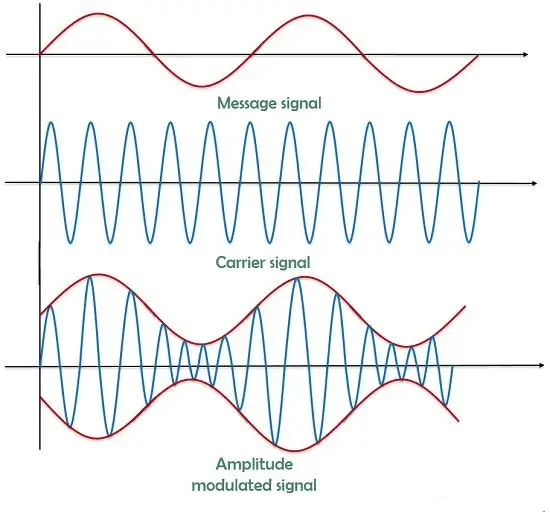
- When the angle of the carrier wave is varied in accordance with the instantaneous value of the modulating signal or baseband signal, the modulation is called Angle Modulation. Frequency modulation and phase modulation are two sub-categories of angle modulation.
- In frequency modulation, the frequency of the carrier wave is varied in accordance with the instantaneous value of the modulating signal.
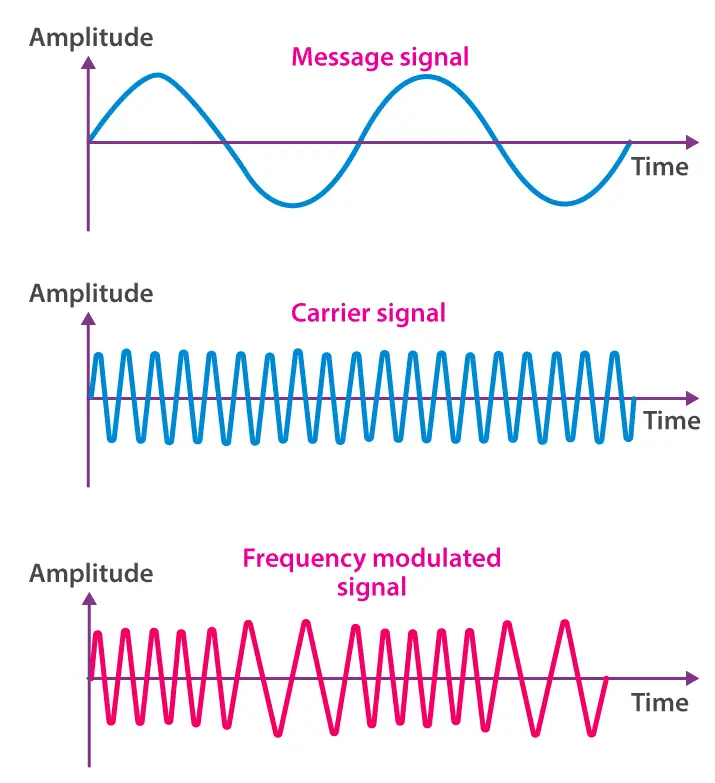
- In phase modulation, the phase of the high-frequency carrier wave is varied in accordance with the instantaneous value of the modulating signal.
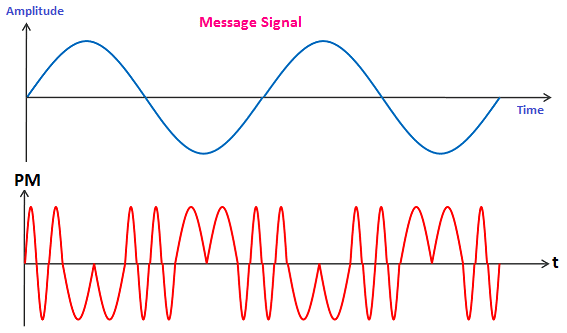
Pulse Modulation
In Pulse modulation, periodic rectangular pulses are used as a carrier wave. The pulse modulation is further divided into analog and digital modulation.
The procedure of analog and digital modulation is as follows.
- In the analog modulation technique, the amplitude or duration, or position of a pulse used as a carrier signal is varied in accordance with the instantaneous values of the baseband modulating signal, then the modulation technique is called Pulse Amplitude Modulation (PAM). The other names for this type of modulation are Pulse Duration/Width Modulation (PDM/PWM), or Pulse Position Modulation (PPM).
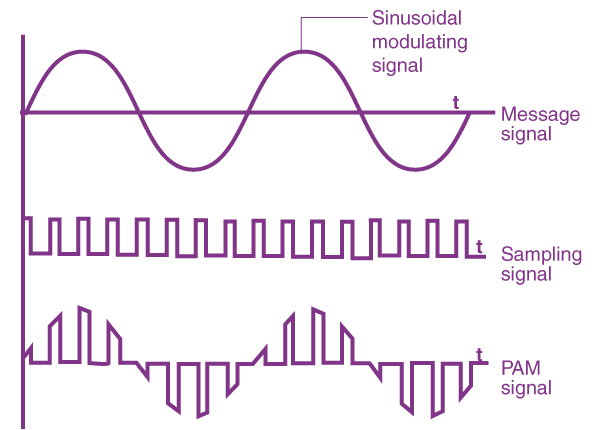
- The other name of the digital modulation technique is Pulse Code Modulation (PCM). In pulse code modulation, the analog signal is converted into a digital form of 1s and 0s. The modulated signal is a coded pulse train, therefore it is called as pulse code modulation(PCM). This is further developed as Delta Modulation (DM).
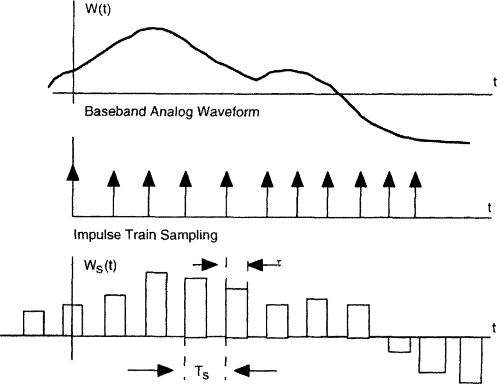
Advantages of Modulation
The following are the advantages of modulation in the communication systems.
- Reduction of antenna size
- No signal mixing
- Increased communication range
- Multiplexing of signals
- Possibility of bandwidth adjustments
- Improved reception quality